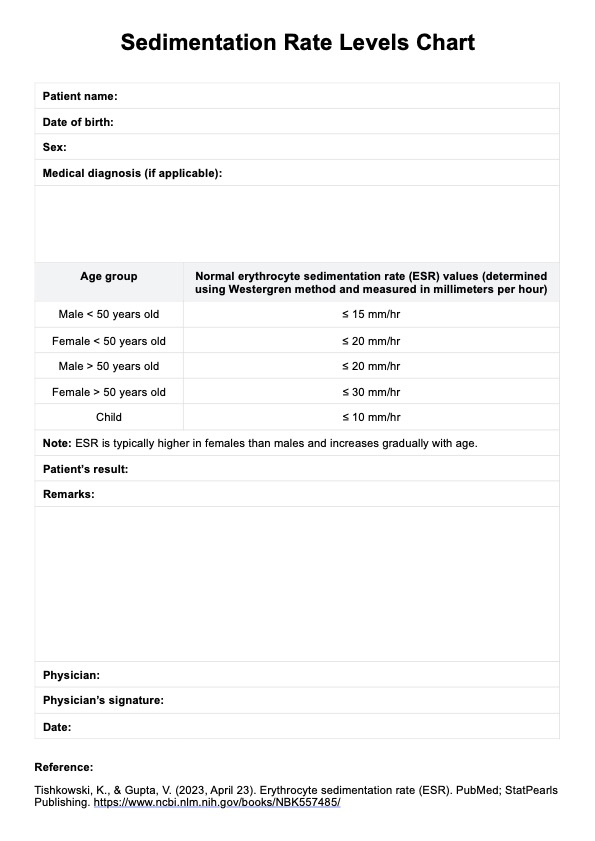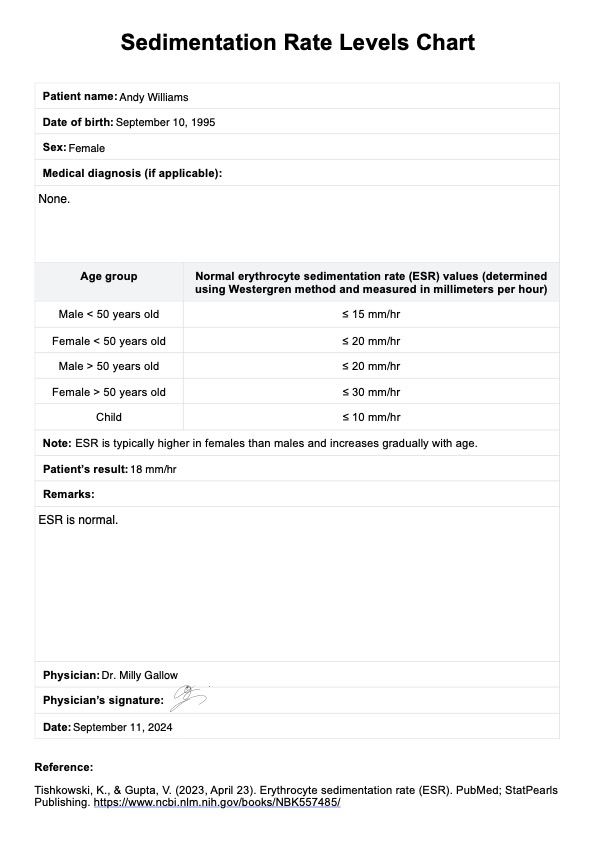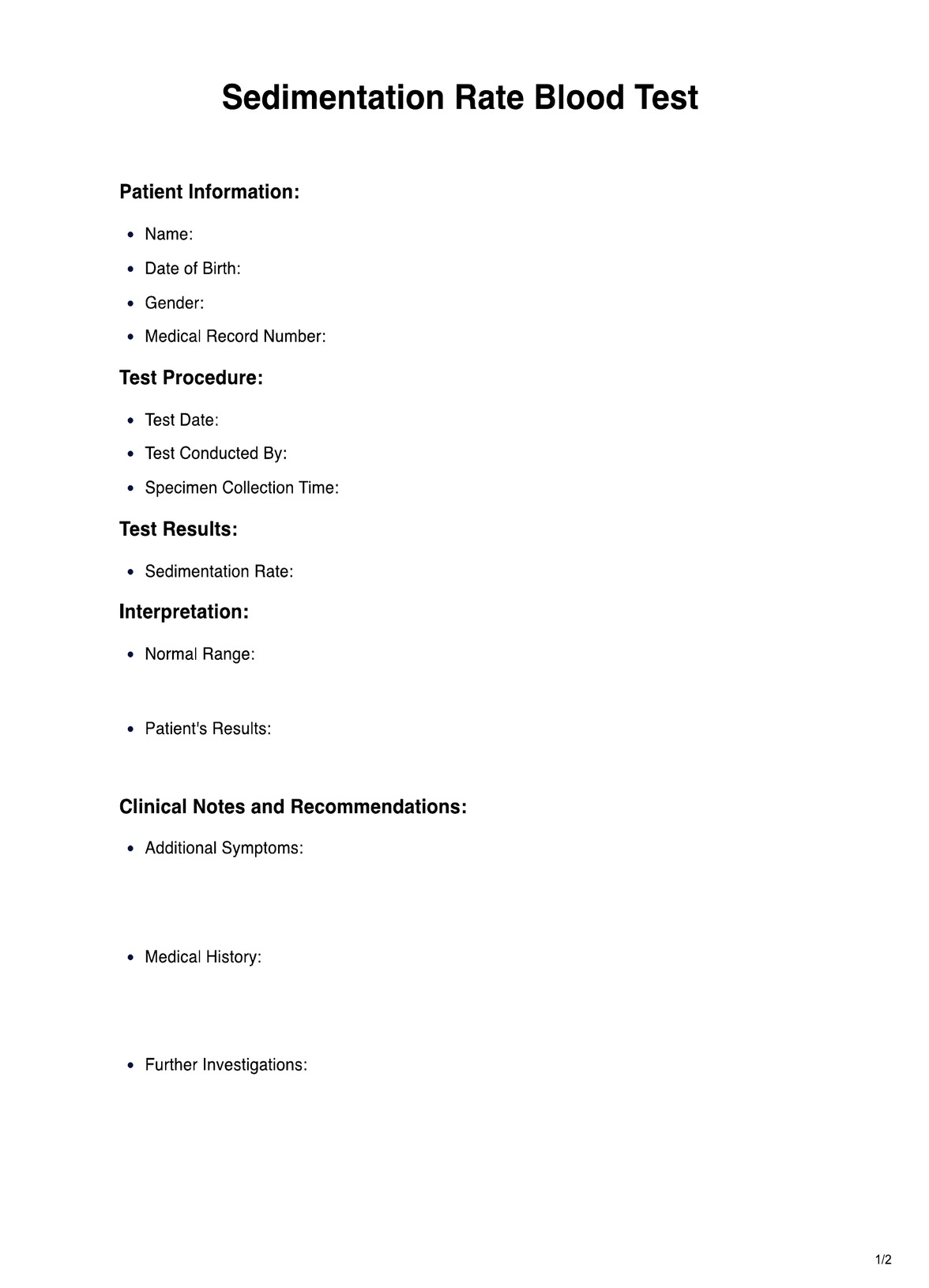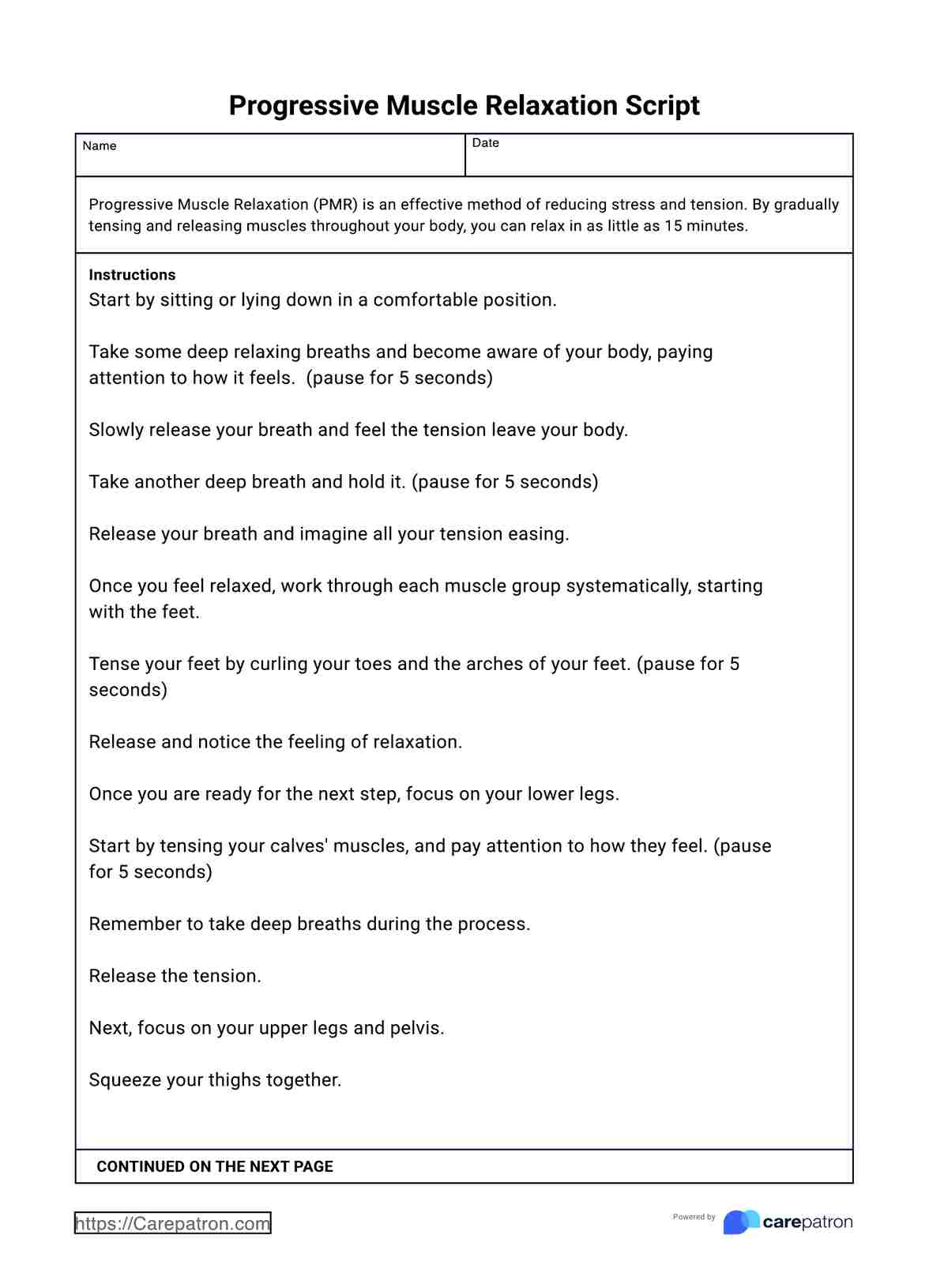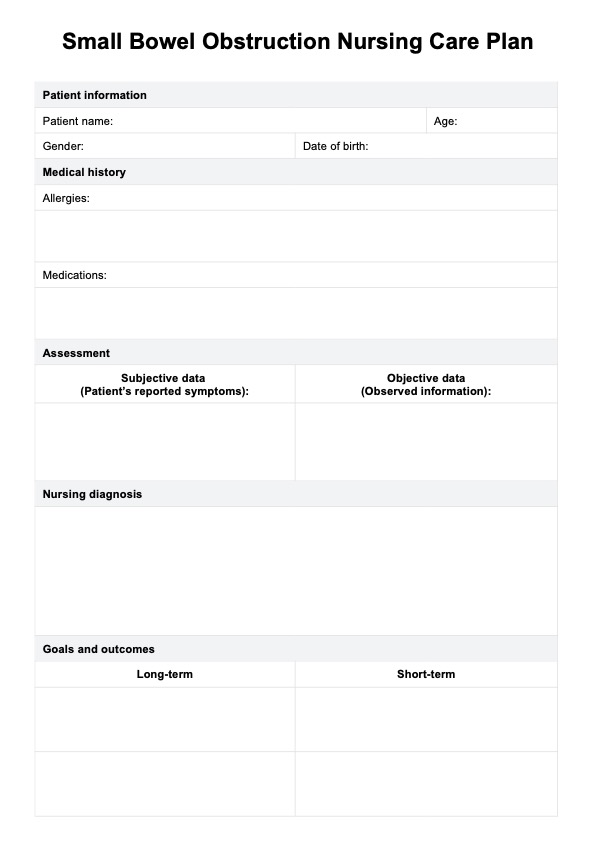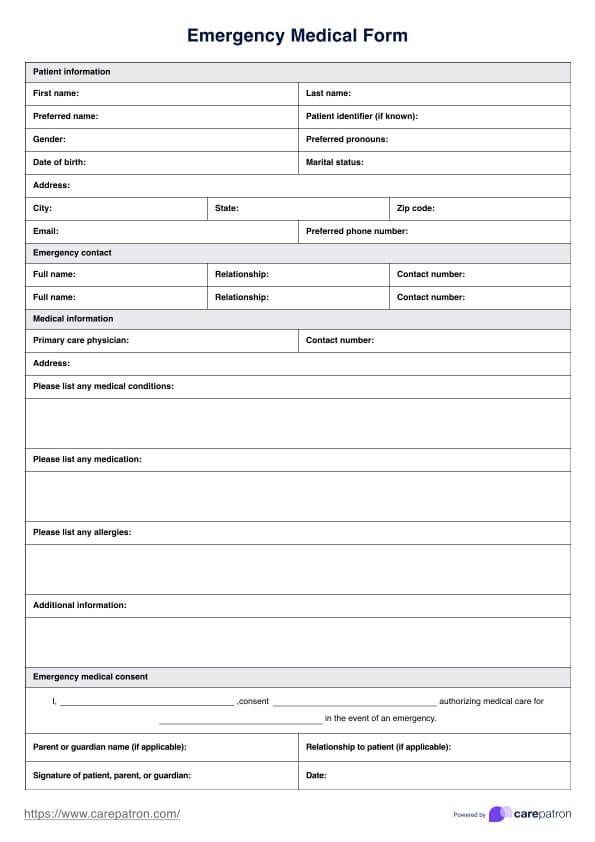Sedimentation Rate Levels Chart
Download a free Sedimentation Rate Levels Chart to track ESR test results for inflammation indicators and manage patient care effectively.


What is a Sedimentation Rate Levels Chart?
A Sedimentation Rate Levels Chart is an essential reference aid that maps the results of an erythrocyte sedimentation rate (ESR) test against established normal values. This simple blood test, colloquially known as the sed rate test, measures the rate at which red blood cells settle in a test tube over a specified time, typically one hour. The faster the cells fall, the higher the sed rate, which can indicate inflammation, as it suggests a higher level of acute-phase reactants in the blood.
The sed rate chart is a comparative reference for medical practitioners, enabling them to assess whether a patient's sed rate falls within a normal range or indicates potential medical concerns. Normal ranges can vary based on age, sex, and measurement method. For instance, females may have slightly higher normal ESR values than males (Tishkowski & Gupta, 2023).
Sedimentation Rate Levels Chart Template
Sedimentation Rate Levels Chart Example
How does this chart work?
The Sedimentation Rate Levels Chart is a straightforward yet vital tool in medical diagnostics, visually representing the erythrocyte sedimentation rate (ESR) blood test results. Here's how healthcare professionals typically use this chart:
Step 1: Download the erythrocyte sedimentation rate chart
Download the Sedimentation Rate Levels Chart using the link we've provided in this guide. If you have a Carepatron account, you may also find it through our templates library. Have the chart ready before the test.
Step 2: Conduct the blood test
A healthcare provider draws a blood sample from the patient, typically from a vein in the arm. This sample is then transferred into a standardized test tube used for the ESR test. Once the blood sample is placed in the tube, it's left undisturbed to sit vertically. A timer is set to track the sedimentation process, settling red blood cells (erythrocytes) to the bottom of the tube and leaving the blood serum visible above.
Step 3: Measure the sedimentation rate
After one hour, the distance the red blood cells have descended is measured in millimeters from the top of the blood column. This measurement is the patient's ESR value.
Step 4: Compare with reference values
After the sedimentation rate blood test, compare the patient's ESR value against the normal reference values indicated on the chart. These reference values are stratified by age and sex, as normal ESR levels can vary accordingly.
Step 5: Interpret results
The ESR value is interpreted in the context of the patient's overall clinical picture. Elevated levels may suggest inflammation or disease, while values within the normal range generally indicate the absence of acute inflammatory processes.
Normal sedimentation rate values
The Westergren method measures the distance red blood cells fall in an hour in a standardized tube. Reaffirmed in 2011 by the International Committee for Standardization in Haematology (ICSH) and Clinical and Laboratory Standards Institute (CLSI), it is still the gold standard despite the rise of automated machines.
The standard reference values for the erythrocyte sedimentation rate (ESR) measured by the Westergren method are as follows (Tishkowski & Gupta, 2023):
- Males under 50: ≤15 mm/hr
- Females under 50: ≤20 mm/hr
- Males over 50: ≤20 mm/hr
- Females over 50: ≤30 mm/hr
- Children: ≤10 mm/hr
While the blood sedimentation rate is not disease-specific, it is a valuable indicator of inflammation associated with various conditions. An abnormal ESR can suggest a condition but requires other tests for confirmation.
Elevated ESR may be linked to anemia, cancers, kidney disease, pregnancy, thyroid issues, or infections like systemic infections, bone infections, and tuberculosis. Low ESR can result from conditions like heart failure, leukemia, polycythemia, or low plasma proteins (Mount Sinai Health System, 2023). The Sedimentation Rate Levels Chart is particularly useful in tracking the progression or remission of disease over time and in monitoring the effectiveness of treatments.
When would you use this chart?
Here are some of the critical situations when this Sedimentation Rate Levels Chart is most appropriately utilized:
Clinical suspicion of inflammatory conditions
When patients exhibit symptoms such as unexplained fever, chronic fatigue, or muscle pain, which could indicate underlying inflammatory disorders like rheumatoid arthritis or temporal arteritis, the chart helps assess the severity of inflammation. The Sedimentation Rate Levels Chart can help differentiate between inflammatory and non-inflammatory conditions, as a high ESR is more common in the former.
Monitoring disease progression and evaluating treatment response
The chart is used over time for chronic inflammatory conditions to track the disease's progression or remission. In patients undergoing treatment for inflammatory diseases, periodic ESR tests and subsequent charting provide insights into the treatment's effectiveness, helping guide adjustments in therapeutic approaches.
Preoperative assessment
Before surgery, this chart can be part of the preoperative workup to identify any hidden infections or inflammatory conditions that could affect surgical outcomes. The ESR test is also often ordered alongside other blood tests, such as C-reactive protein (CRP), to provide a more comprehensive picture of the body's inflammatory state.
Screening in at-risk populations
The chart may be used as a routine screening tool for older adults or those with a family history of autoimmune diseases to catch early signs of inflammation.
References
Mount Sinai Health System. (2023, August 20). ESR. https://www.mountsinai.org/health-library/tests/esr
Tishkowski, K., & Gupta, V. (2023, April 23). Erythrocyte sedimentation rate (ESR). PubMed; StatPearls Publishing. https://www.ncbi.nlm.nih.gov/books/NBK557485/
Commonly asked questions
Primary care physicians, rheumatologists, and other specialists may request an ESR test to help diagnose inflammation-related conditions.
Sedimentation Rate Levels Charts are used when symptoms suggest conditions like arthritis, vasculitis, or inflammatory bowel disease and to monitor the activity of these conditions.
Sedimentation Rate Levels Charts are used to record and compare ESR results with normal ranges to assess the presence and severity of inflammation.
The erythrocyte sedimentation rate test takes about an hour, and the results can be charted immediately afterward.

.jpg)
